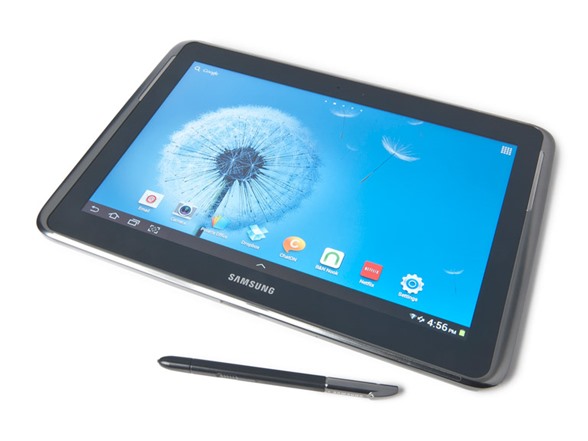
I learned to use this combination of software and hardware in the context of creating screencasts for my spring 2014 course Physics 162L (“ Electricity, Magnetism, and Light”) of thirty students, and I found the screencasts to be a useful way to supplement the classes and the assigned textbook reading. In this post, I discuss how one can create screencasts easily, inexpensively (less than $550 for all hardware and software as of the date of this post), and with good quality by using an Android tablet, specifically a Samsung Galaxy Note 10.1 2014 tablet, with an Android application called LectureNotes.

In contrast, PowerPoint-like slides involve preassembled information, say a slide of several typeset equations or a slide containing a polished figure from a textbook, and it is then more difficult for student to understand the many details of such a slide since all the details are visually presented at the same time, or to reproduce some of the details by writing out the math or by drawing a figure on his or her own. Screencasts can also be more effective than recording a PowerPoint-like presentation since a screencast allows a student to see step-by-step how an instructor assembles or creates complicated ideas, say by writing out and describing successive steps of some mathematical derivation, or by drawing some complicated diagram part by part, or by rewriting a sentence to be more grammatical and clear. Watching a screencast is similar to watching a video of an instructor writing on a board in front of a class but a screencast can be more effective pedagogically since a student sees only what is being written on the screen, and so is not distracted visually by details of the instructor or of the classroom.


The enormous success of Khan Academy‘s free online tutorials for students ranging from elementary school to college has made many educators aware of the benefits of using short (5-10 minute-long) screencasts to supplement or to flip a class, so that students spend more of their class time actively asking questions and solving problems, and less time listening passively to the instructor.Ī screencast is a video file that displays in real-time what someone is writing on some screen, usually with an audio explanation of what is being written. Department of Physics, Duke University Introduction: what is a screencast and what is a screencast good for?


 0 kommentar(er)
0 kommentar(er)
